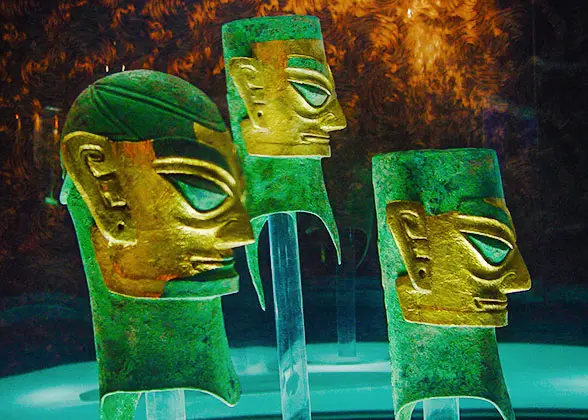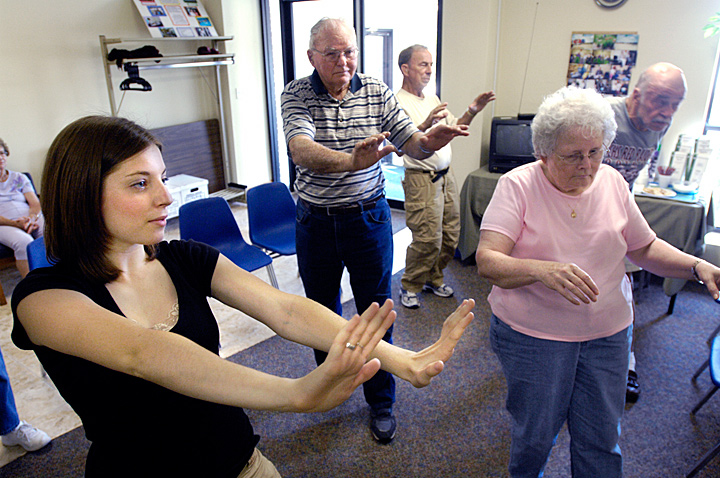Daoism and Sex (part 1)
/Daoism's doctrine on sex and sexual practices is one of the most misunderstood aspects of Daoism.
I recently dove into the debates about gay marriage on some political blogs. I'm not going to link to them because I was just goofing around. But in the process of considering some of the strange and desperate arguments put forward against gay marriage, it suddenly struck me that many people actually don't know what sex is. Wow, what a shock.
So I thought I would try to shoot two pheasants with one arrow, and exposit both subjects.
The Daodejing has a phrase,
"If Heaven has a reason, nobody knows it."
I think this is a good place to start. We don't know why life exists. We are capable, however, of recognizing that there are two categories, "alive" and "not alive," and that we belong to the category, "alive." (I have talked about the blended categories of ghosts and other such "part alive, part not-alive" entities in previous posts--so I'll skip that part of the argument here.)
One of the distinguishing characteristics of the "alive" category is that we are capable of reproducing ourselves. The substance, force, and function which reproduces itself in all life is called in Chinese: Jing. The word therefore includes English words like, sperm or eggs, and underlays English functions like scabbing, and regenerating.
All living things ingest qi (air/water/nutrients/light) and transform some of it into jing. Plants and animals which reproduce themselves sexually also differentiate themselves (to some degree) into male and female genders (or parts of themselves in some cases such as worms and slugs). Sexual reproduction requires that the two genders of a particular species combine their jing.
All living things produce way more jing than they actually need for sexual reproduction to be successful, and way more jing than ever gets used in the sexual reproduction process. In other words, sex is very inefficient, A plant or animal can be extremely potent in its production of jing, and still not produce offspring.
Here are some examples. Some chickens lay eggs everyday. Cockroaches and mosquitoes produce eggs in the millions, with very low survival rates for individual eggs. During certain times of year, the grass and trees are constantly trying to have sex with my eyes and nose (pollen). Dogs hump people's legs.
You can fit a million sperm on the tip of a pin.
The process of transforming qi into jing has two basic routes it can follow:
- Qi can transform into jing which regenerates and heals the individual living entity.
- It can produce sperm, eggs, pollen or ovules.
Some Daoist practices seek to gain some volition over this process so that less qi will go down the sperm and egg producing path and more qi will go towards producing jing used for regeneration or healing.
Many plants produce beautiful flowers which take advantage of animal desires to help them combine their jing (pollen with ovules). Animal behavior which can lead to the combining of the jing of two animals of the opposite gender is, like jing production, incredibly inefficient in every species.
According to Joseph Needham in Science and Civilization, the three basic sex hormones were recognized and isolated into pure substances in China during the 5th century CE.
Daoist practices aren't concerned with hormones directly, but they recognize that certain foods, exercises, activities and even uses of the mind, can effect how much a person is concerned with or even obsessed with sex. More importantly, they recognised that no matter what we do, we are likely at any one moment to be transforming way more qi into jing than we actually need for producing a few viable offspring.
This natural inefficiency is inseparable in animals from the thorny issue of desire. Daoist practices can be divided into two categories.
- Leaning how stop ovulation so that you ovulate only when you have decided to attempt reproduction.
- Reducing or limiting desire.
Desire is a physiological part of our survival apparatus. It is also incredibly inefficient. When desire builds we become totally focused--to the exclusion of other information. To quote the huainanzi, "We run rough-shod over subtlety."
Thus, for Daoists, the physiology of efficiency takes on a moral dimension. Inappropriate behavior is not considered unnatural, it is simply excessive or deficient--misdirected or too strong.
The primary methods through which Daoism engages with desire, are the making of commitments and the refining appetites.
This always begs the question: How can we tell an appetite from a desire? There isn't a simple answer. Appetites generally include assessment and evaluation phases, they are more reflective and experimental-- less driven.
However, it would be a mistake to think that either appetites or desires are somehow rational. I guess you could say that appetites are to desire what reproduction is to sex.
Since all human sexual activity--from putting on lipstick to bumping chests with your male competitors, to vaginal intercourse itself--is naturally inefficient and rarely results in offspring, the desire to have sex with someone of the same gender, with a tree, or with a consenting gorilla, is all just part of this wild inefficiency and abundance we call life.
But if you've ever contemplated a rushing river pouring over a cliff, you already know this.
.

 Perhaps all the self-reflection I see around the blog-o-sphere on the topic of how different rule sets create completely different martial arts will also lead to some self-reflection on clothing designs.
Perhaps all the self-reflection I see around the blog-o-sphere on the topic of how different rule sets create completely different martial arts will also lead to some self-reflection on clothing designs.
 d!"
d!" Last night I saw a wonderful sold-out performance of Alonzo King's
Last night I saw a wonderful sold-out performance of Alonzo King's 

 You can't really be a "modern" person and not ask the questions with regard to pre-20th century ideas, "What should I keep and what should I discard?" "What can I use, and what will just hold me back?"
You can't really be a "modern" person and not ask the questions with regard to pre-20th century ideas, "What should I keep and what should I discard?" "What can I use, and what will just hold me back?" I wish to extend my deepest sympathies to the victims of the Earthquake in China. I lived and traveled around Sichuan for two months in the Summer of 2001. The people I met were wonderful. Compared to the loss of life I'm reading about everyday, the two reports below are minor, but I thought my readers would like to know.
I wish to extend my deepest sympathies to the victims of the Earthquake in China. I lived and traveled around Sichuan for two months in the Summer of 2001. The people I met were wonderful. Compared to the loss of life I'm reading about everyday, the two reports below are minor, but I thought my readers would like to know. When Taijiquan was still new to Westerners, a few Masters claimed that the reason they had pot bellies was because they had so much qi.
When Taijiquan was still new to Westerners, a few Masters claimed that the reason they had pot bellies was because they had so much qi. Because I perform several different sword forms I've gotten in the habit of explaining a little bit about dueling. It is a nice tie in with History and teachers appreciate it. The funny thing is, students already know what a duel is. They often don't know it by name, but when I describe the type of thing a duel would be fought over, namely honor, and that every duel needs to have seconds (to enforce the rules and to fight themselves if the rules are broken)--elementary school students all recognize the "fair fight" so common on the school yard.
Because I perform several different sword forms I've gotten in the habit of explaining a little bit about dueling. It is a nice tie in with History and teachers appreciate it. The funny thing is, students already know what a duel is. They often don't know it by name, but when I describe the type of thing a duel would be fought over, namely honor, and that every duel needs to have seconds (to enforce the rules and to fight themselves if the rules are broken)--elementary school students all recognize the "fair fight" so common on the school yard.
 I have a simple question for which I don't have a good answer.
I have a simple question for which I don't have a good answer.